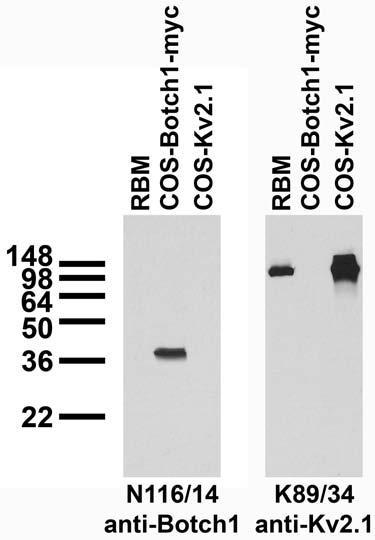Ships: 1-2 business days
Product Specific References for Applications and Species
| Immunocytochemistry: Mouse | ||
| PMID | Dilution | Publication |
| 29221132 | 1:100 | Mei, B., et al. 2017. Neuroprotection of Botch in experimental intracerebral hemorrhage in rats. Oncotarget, 95346-95360. |
| Western Blot: Mouse | ||
| PMID | Dilution | Publication |
| 37800623 | 1:2000 | Chang, YS, et al. 2023. Inhibition of the NOTCH and mTOR pathways by nelfinavir as a novel treatment for T cell acute lymphoblastic leukemia. International Journal of Oncology, . |
| 27526673 | 1:500 | Örd, D., et al. 2016. TRIB3 increases cell resistance to arsenite toxicity by limiting the expression of the glutathione-degrading enzyme CHAC1. Biochimica et Biophysica Acta, 2668-2680. |
| 24767995 | not listed | Chi, Z., et al. 2014. Botch is a γ-glutamyl cyclotransferase that deglycinates and antagonizes Notch.. Cell Report, 681-688. |
| 22445366 | not listed | Chi, Z., et al. 2012. Botch promotes neurogenesis by antagonizing Notch.. Developmental Cell, 707-720. |
| Western Blot: Rat | ||
| PMID | Dilution | Publication |
| 29221132 | not listed | Mei, B., et al. 2017. Neuroprotection of Botch in experimental intracerebral hemorrhage in rats. Oncotarget, 95346-95360. |




